Content marketers everywhere are guilty of purposefully trying to scare the heck out of their readers.
“You’re making these mistakes! You’re doing it wrong. You’re wasting time and money. Your competitors are beating you!”

At Unbounce, we’re as guilty of fear-mongering as anyone else. Some of our most-shared posts have spooky angles, whether we’re warning readers that they could unknowingly be missing out on conversions…
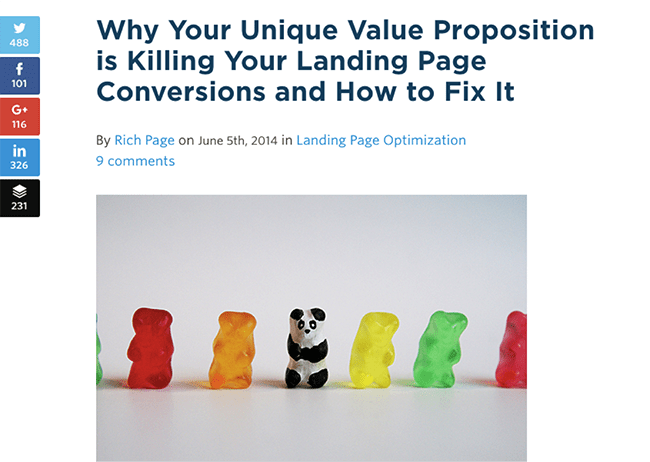
… or flat out accusing them of doing it all wrong:
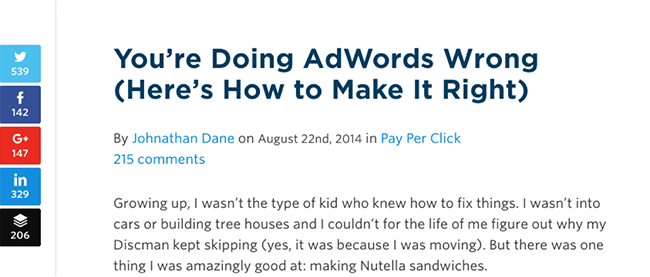
For a variety of psychological reasons, “scary content” just works — we all know this.
But when does creepy content become creppy?

In other words, when does using fear and negativity in your content become a sleazy, click-baity tactic that informed readers will see right through?
It’s a debate that the Unbounce content team has been engaging in recently: is fear-based content at odds with a commitment to empower readers? Do vanity metrics like pageviews and social shares come at the cost of sounding pedantic?
Maybe, maybe not. But we think it’s worth reflecting on.
And that’s exactly what the Unbounce content team did, in a recent content strategy meeting. Here are some of the things we touched on.
Fear-based content isn’t delightful or empowering
Like most startups, Unbounce has a set of core values that we (try our best to) live by.
Two of these core values are especially dear to members of the content team:
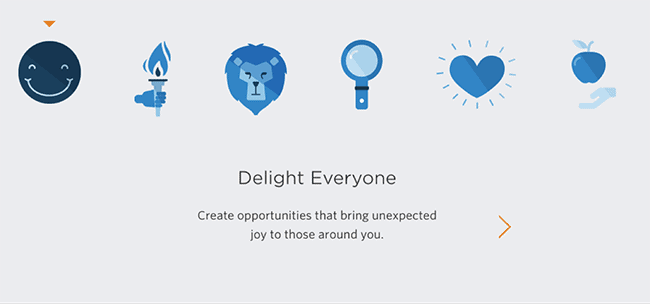
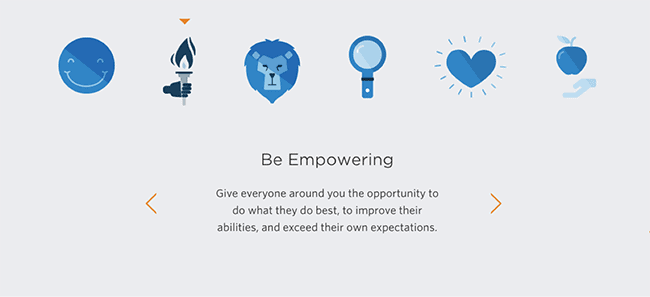
As content creators, we’re uniquely positioned to delight our readers by making learning fun, or even just make them laugh when they least expect it. (I challenge you to read my colleague Brad Tiller’s placeholder copy for our Persuasion landing page template and not let out a snort.)
But for Unbounce, delight is about more than just humor or entertainment value. It’s about understanding our audience so well that we can speak to their problems and concerns in relatable terms.
Beyond that, one of my favorite things about my job on the content team is that I am also in a position to empower marketers to become better at their jobs by providing them with actionable and comprehensive content. The kind of stuff that gets people excited about launching a new marketing campaign (by giving them the tools — and the inspiration — they need to do so).
It’s the reason we’re notorious for being hard on our contributors, always pushing them to provide more examples and more data — and it’s the reason we tease Content Strategist Dan Levy for constantly asking everyone to “unpack that.”

But what happens when your post opens with a subtle jab at your readers, telling them, “Your competitors are doing it better than you”? What happens when your title is phrased condescendingly, implying that your readers are not-so-good marketers?
I think it depends.
Some readers will surely be up for the challenge, and that sort of phrasing will bring out their competitive side.
But other readers won’t feel too great about it. They won’t feel good about reading your post, they won’t feel empowered to try new things and they probably won’t feel good about doing business with you.
As Brad so articulately put it in our content team Slack channel:
There’s no shortage of awesome and thoughtful things for me to read, so I’m likely to skip something that comes from a position that not only presumes my incompetence, but shames me for it pre-emptively.
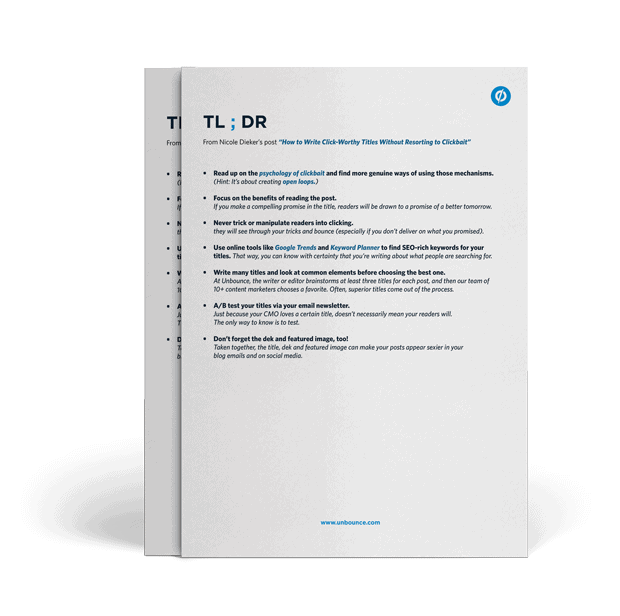
Write Click-Worthy Titles Without Resorting to Clickbait
Your readers will see right through your tricks
At Unbounce, we pride ourselves on speaking to a sophisticated readership. Our readers are smart. If we bullsh*t or cut corners, we get called out. And we wouldn’t want it any other way.
Our readers keep us honest. Knowing that we’ve got a ton of smart people interacting with our content puts on the pressure to create genuinely helpful content. We try our best to skip past all the “black-hat shortcuts” and “easy fixes,” and go straight to the stuff that works because it’s fricken’ hard.
… But we’re not perfect, and sometimes we make mistakes. Pull up a chair, it’s storytime.
After an upcoming post is gone over with a fine-toothed comb by one of our editors, we send it off to an internal mailing list of 10-ish content team members. We poke further holes in the post (I told you, we’re hard asses) and vote on a list of potential titles.
Several months ago, we were doing just this for an upcoming post, and we settled on a title that we thought would catch people’s attention: Everything You’ve Been Told About Copywriting is Complete Nonsense.
When we hit the publish button, we learned what happens when you experiment with a negative title “because it works” without really delivering in the post itself. We got flamed in the comments.
The post contained some solid advice, but it was buried under a click-baity title.
We sacrificed clarity for something we thought would get us more clicks, opens and shares. And it backfired.
But we learned a really important lesson: to be as honest and genuine in our marketing content as possible. At the end of the day, if we perceive something as a “trick,” our informed audience is likely to see it that way, too.
And they’re not shy to call us out on it.
The upside of being honest and writing content that does exactly what it says on the tin (read: title)?
We attract an audience of smart marketers. The kind that won’t be fooled by BuzzFeed-esque click tricks. The kind that comes back again and again and leaves insightful comments. And potentially become brand advocates or even customers.
There’s a time and place for negativity
This isn’t to say that using fear and negativity in your titles is a black-hat trick or dishonest. Many members of the Unbounce content team felt strongly that there is a time and a place for these tactics.
As Brad put it:
Addressing fear is a totally legit tactic, and I think can be used in positive ways, ways that tap into our anxieties while simultaneously being reassuring about how we can address them.
Our Content Coordinator Amy Wood echoed Brad’s point, driving home the importance of following up the fear/negativity with an actionable solution:
I’m also of the opinion that it can be useful and warranted in certain situations. But above all else, we still need to be producing quality content that — click-baity headline or not — never makes the reader feel, ‘Well that was a waste of my time.’
So if you decide to use fear and negativity in your titles to draw readers in, don’t leave them hanging. Offer up the solution to those anxieties.
What are our other options?
If you’ve tested negative titles and feel you may want to experiment with other ways to get people clicking on your titles, check out Nicole Dieker’s post, “How to Write Click-Worthy Titles Without Resorting to Clickbait.”
Or grab the 250-word TL;DR summary we created below.

